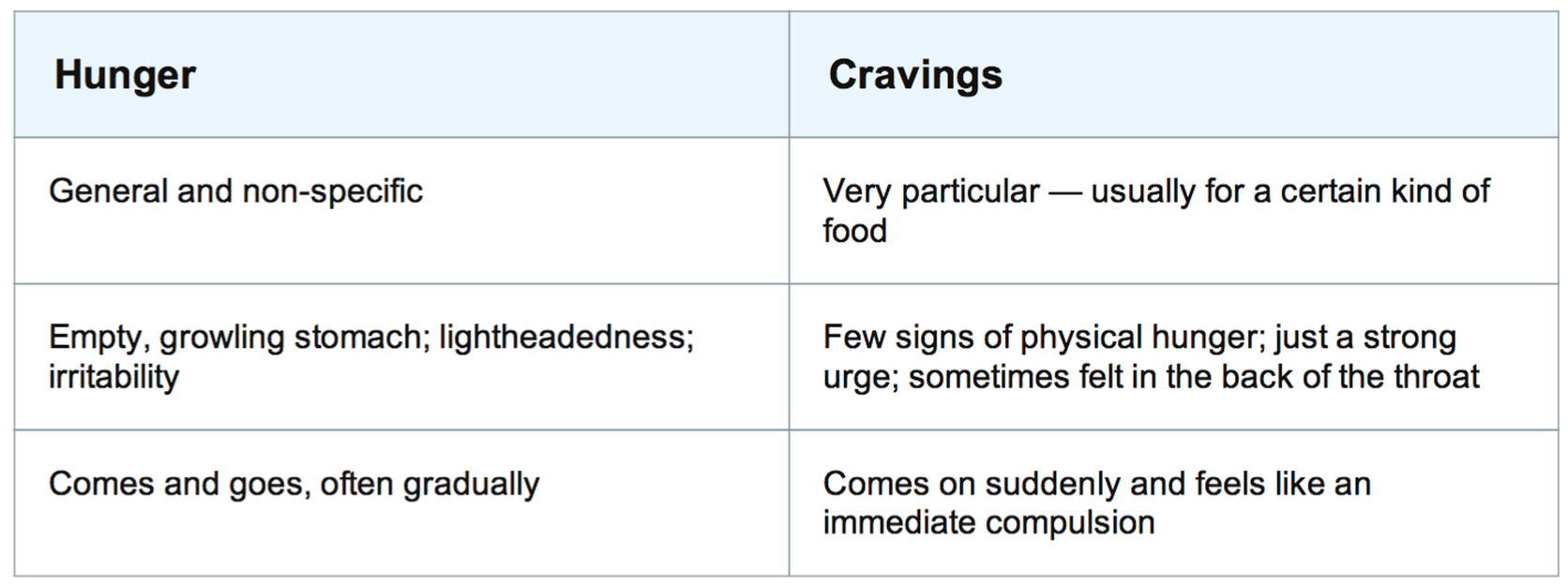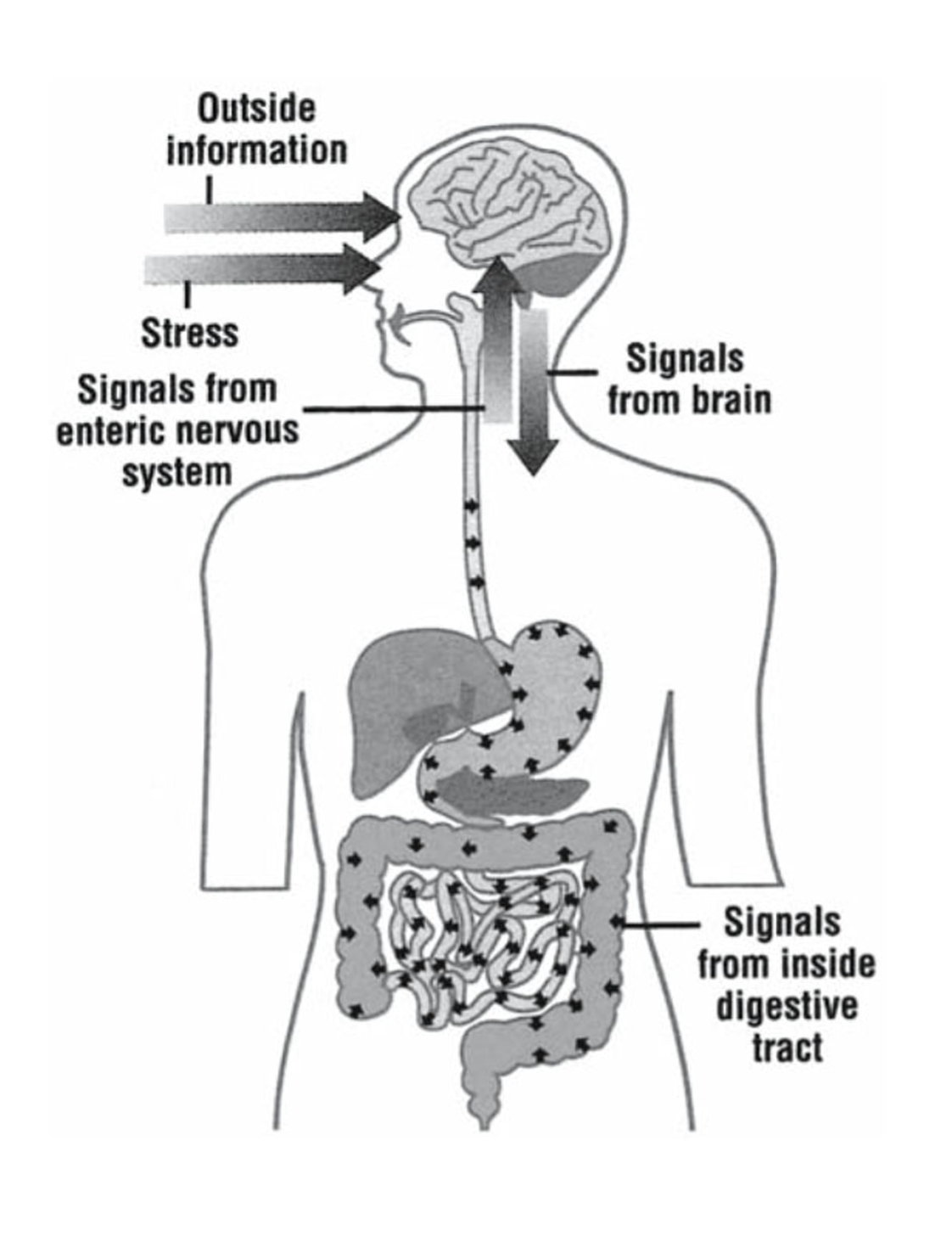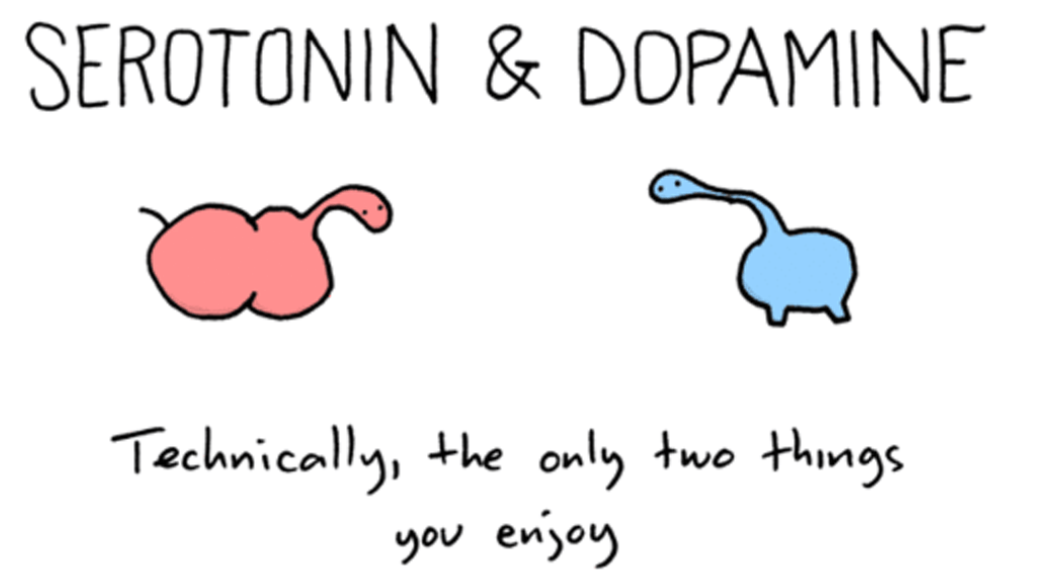Understanding and Managing Food Cravings

Today, we dive into how these "gut feelings" influence cravings and the science behind them.
If you want practical tips, skip to the "What to Do Today" section. If you're curious about what drives cravings, keep reading!
"Want to Eat" vs. "Need to Eat"
Many people feel the urge to eat when they are anxious, sad, angry, or bored.
This is because our emotions and physical sensations are often confused with hunger. True hunger is a general feeling of being hungry, possibly accompanied by crankiness or light-headedness.
Cravings, on the other hand, are specific and driven by the desire for a particular food that we believe will make us feel better.

Where Do Cravings Come From?
Our brains are busy places, constantly processing inputs.
Our brains also have to organize input coming in from other places too, such as:
- our emotions
- our physical feelings
- our beliefs
- our thoughts
Often, signals can get jumbled.

This complexity can sometimes mix up signals, making us think we are hungry when we are actually experiencing an emotion or physical sensation.
What Do You Want Food to Do for You?
Cravings are strong beliefs that eating a particular food will make us feel better.
This is partly because of neurotransmitters like serotonin and dopamine, which play significant roles in our mood and eating behaviors.

Serotonin makes us feel relaxed and signals us to stop eating.
Dopamine is our "reward" neurotransmitter, giving us a "high." When we eat, both serotonin and dopamine are released, making us feel good.
This reaction is why people often eat to boost their mood or calm themselves.
Eating as Self-Medication
Eating can serve as a form of "self-medication" to soothe or boost our mood.
Food manufacturers know this well, creating foods that are
- sugary,
- fatty,
- salty,
- and varied in texture to trigger these feel-good chemicals.
Reduce Cravings with Smart Food Choices
The good news is that we can reduce cravings with smart food choices.
Whole foods nourish us without the intense "hit" of processed foods.
Eating plenty of protein, healthy fats, and a range of vitamins and minerals from whole foods can keep our brains happy.
Spending more time chewing, like when eating whole foods slowly, also helps us feel more satisfied.
Do I Crave Stuff I Need?
Cravings do not usually mean our bodies need something.
We rarely crave healthy, nutrient-rich foods like spinach or broccoli.
Instead, we crave nutrient-empty foods. If you keep a “craving diary”, you will probably notice patterns.
For instance:
- You crave a certain food when it’s near you — for example when someone brings cookies to work and leaves them out.
- You crave a certain food when you associate it with some kind of feeling, such as comfort.
- You crave a certain food when you’re feeling stressed out; you count on that food to make you feel better.
- Your cravings change throughout the day, or the week.
- You have a particular thought or story associated with a craving, e.g. "I need this."
Craving-Busters
Here are some tips to help deal with cravings:
- Understand that cravings are normal. They come and go.
- If the craving is minor, ignore it.
- If the craving is moderate, distract yourself.
- If the craving is overwhelming, have a small portion in a safe environment. Eat it slowly and stay aware of your fullness signals.
- Keep a craving diary. Write down what you crave, when, and what you are thinking and feeling. Look for patterns and disrupt them.
- Substitute with something that gives the same feeling. For instance, munch on raw veggies for crunchiness, take a hot bath for warmth and comfort, or go for a walk for distraction.
- Consult a healthcare provider if you have constant, powerful cravings, as they might indicate a hormonal imbalance or nutrient deficiency.
Craving Checklist
When you feel a craving, ask yourself:
- What do I expect this food to do for me?
- What story am I telling myself about this craving?
- What else is going on for me right now?
Try to break the chain that leads to a craving or practice refocusing your attention.
What to Do Today
- Understand that cravings are normal. They come from the interaction between your thoughts, feelings, environment, and natural tendencies.
- Ask questions when you feel a craving.
- What do I expect this food to do for me?
- What story am I telling myself about this craving?
- What else is going on for me right now?
- Use craving-busting tips to deal with any cravings that arise.
- Trust your body cues over your brain cues to distinguish between physiological and psychological hunger.
- Slow down. Take a deep breath or three to stay in control and aware.
Reflection
- What foods do you typically crave?
- What do cravings feel like for you?
- How can you tell a craving from true hunger?
By understanding and managing your cravings, you can take control of your eating habits and improve your overall well-being. Happy eating!
Until next time
RD Bert